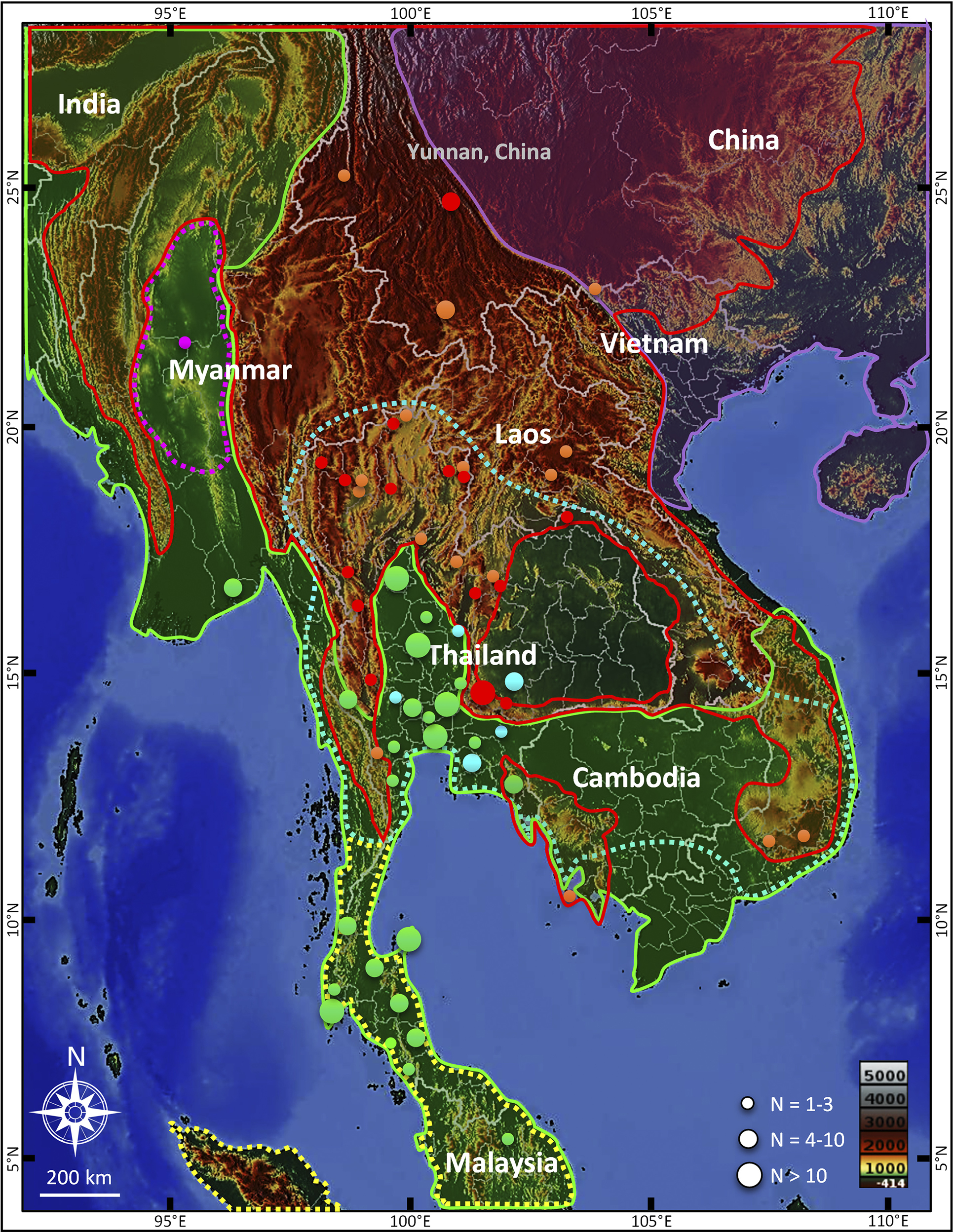
|
||
|
Distribution of cobra species in Thailand and adjacent countries as suggested by this study. Based on this study’s results, the distribution of Naja fuxi covers mountainous areas around the central lowland of Thailand and southern China (orange dots: dark = samples obtained in this study, light = samples examined from different sources [Table S6]). Dot size denotes the number of samples. According to Ratnarathorn et al. (2019) and the specimens in this study, the central lowland itself and the Sundaic peninsula are inhabited by N. kaouthia (green dots). Outside this range, N. fuxi may colonize other highland areas (orange line). The distribution of N. kaouthia is shown by a green line (in Myanmar [Leviton et al. 2008], India [Whitaker and Captain 2016], Malaysia [Charlton 2020], and Cambodia and Vietnam [Vogel 2006]) and N. atra by a purple line (Wüster et al. 1995; Lin et al. 2014). The distributions of the venom-spitting cobra species are displayed with dashed lines: N. siamensis (blue dots for this study; and line for Wüster et al. 1995; Cox et al. 2012; Das 2022), N. mandalayensis (pink line, Wüster and Slowinski 2000; Das 2022), and N. sumatrana (yellow line, Cox et al. 2012; Thai National Parks 2022; Das 2022). Map background has been applied from https://maps-for-free.com. |